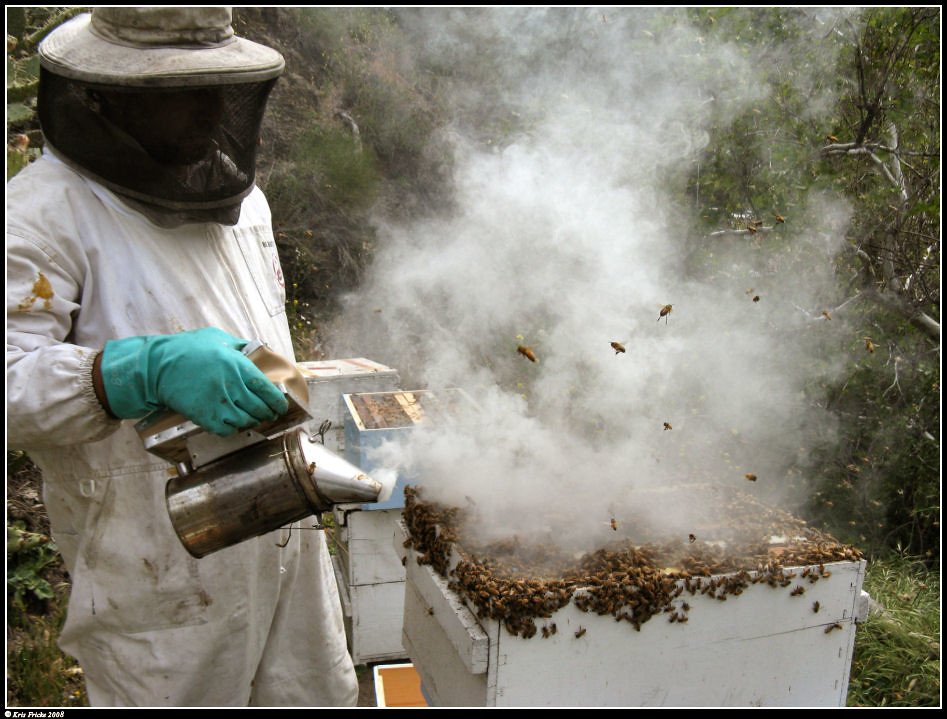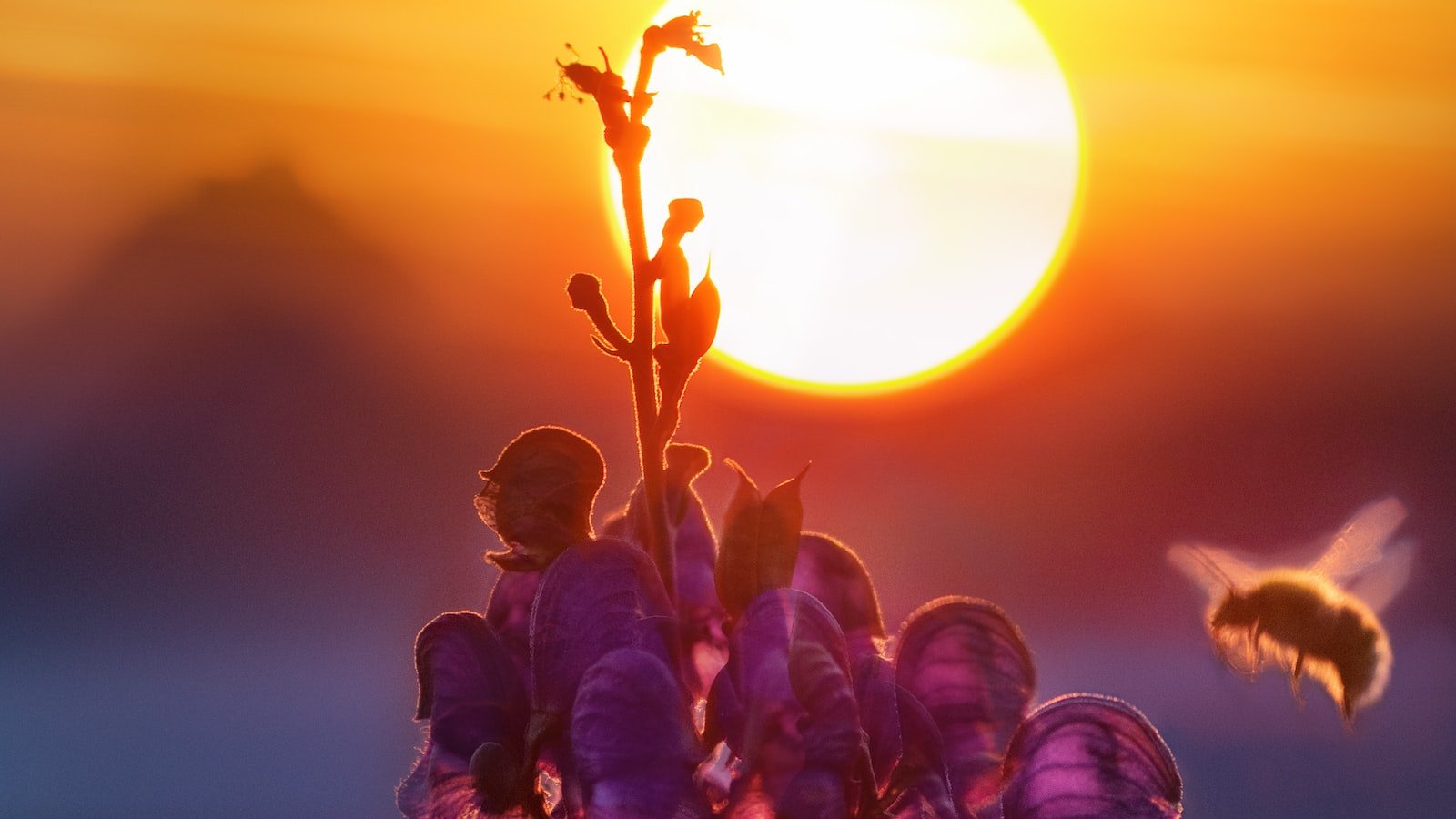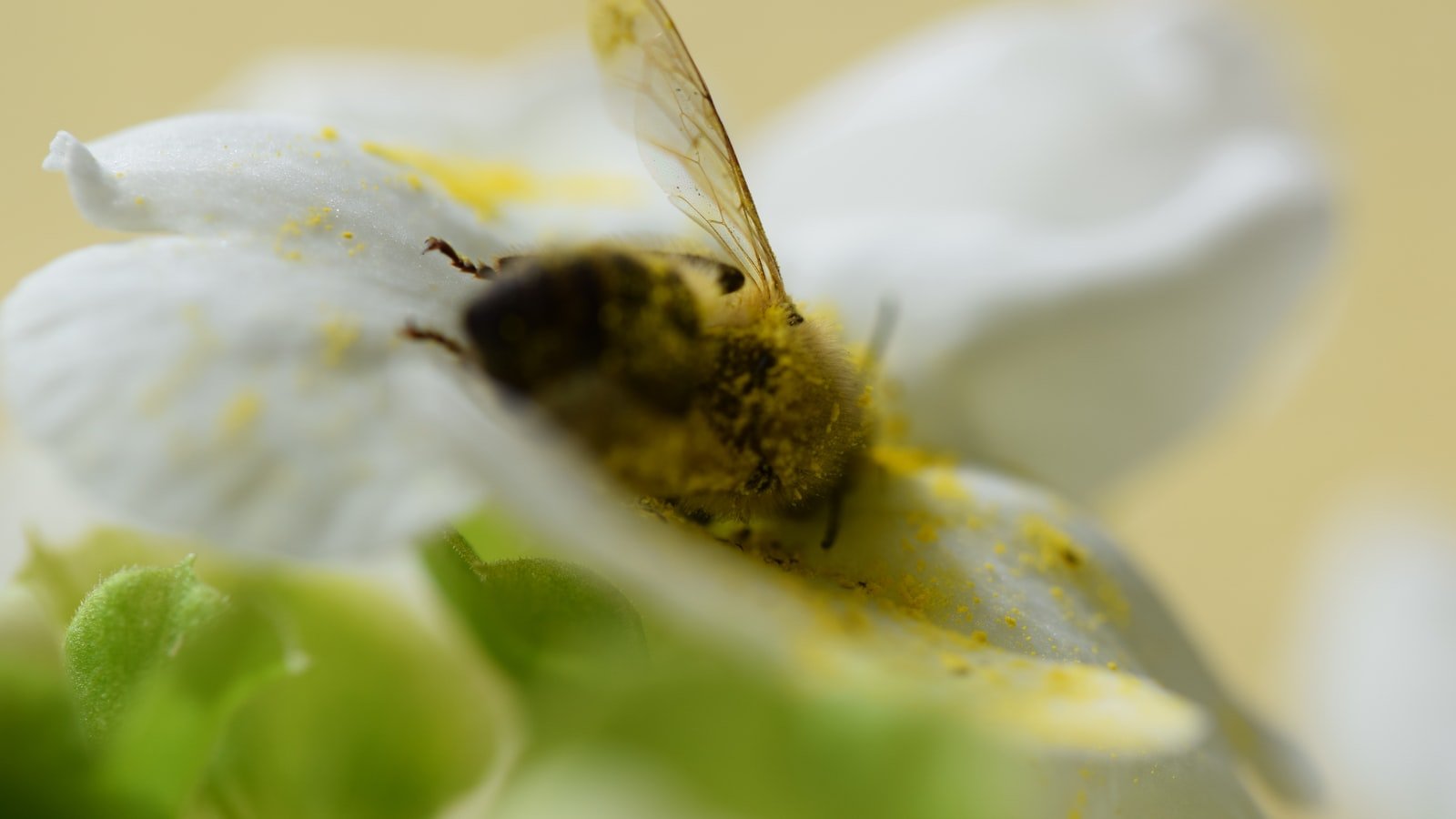In a world buzzing with activity, bees have been silently communicating for millions of years, their intricate language often overlooked by human observers. While some may dismiss their buzzing as mere background noise, the truth is that these industrious insects have a highly sophisticated mode of communication that rivals any human language. By delving into the fascinating realm of bee communication, we uncover a world of intricate signals, complex dances, and pheromone-infused conversations. So, put on your metaphorical bee suit and get ready to decode the secrets of these tiny language virtuosos in our ultimate guide to understanding bee communication. Nature’s symphony of secret messages awaits, ready to reveal the hidden harmony of the hive.
Table of Contents
- Heading 1: Honeybee Communication: Unlocking the Secrets of the Hive Society
- Heading 2: The Language of Bees: Decoding the Waggle Dance and Beyond
- Heading 3: The Power of Pheromones: How Chemical Signals Drive Bee Behavior
- Heading 4: Social Hierarchy and Conflict Resolution in Bee Colonies
- Heading 5: Promoting Bee-friendly Environments: Tips for Supporting Effective Communication
- Q&A
- In Retrospect

Heading 1: Honeybee Communication: Unlocking the Secrets of the Hive Society
The intricate world of honeybee communication has long fascinated scientists and beekeepers alike. Within the confines of the hive, these incredible insects have developed a sophisticated system of interactions, allowing them to coordinate tasks, convey information, and maintain the complex social order of their society. Unlocking the secrets of honeybee communication sheds light on the remarkable societal structure and provides valuable insights into the workings of one of nature’s most organized communities.
Honeybees rely on various forms of communication, primarily through the use of pheromones, dance language, and vibrations. Pheromones serve as chemical signals that transmit information about the health, status, and behavior of individual bees. From marking food sources to signaling danger or distress, these scent-based messages allow bees to efficiently and effectively convey information to their comrades. Additionally, honeybees communicate through their intricate dance language, where they perform specific maneuvers to share the location and quality of food sources. This extraordinary dance not only informs other bees but also acts as a recruitment tool, guiding fellow foragers to discover new nectar-rich areas.
Vibrations, produced by the beating of their wings or by specific body movements, serve as another mean of communication for honeybees. These vibrations communicate important messages, such as a call for help or the excitement of a virgin queen attracting potential mates. The ability of honeybees to utilize multiple methods of communication emphasizes their complexity as social insects. By investigating and decoding these intricate forms of communication, scientists can gain a deeper understanding of honeybee society, contributing to vital research in conservation efforts and the preservation of these remarkable creatures.
- Chemical signals (pheromones) convey information about health, status, and behavior.
- Dance language is used to communicate location and quality of food sources.
- Vibrations serve as a means to communicate messages such as calls for help or attracting potential mates.

Heading 2: The Language of Bees: Decoding the Waggle Dance and Beyond
The Language of Bees: Decoding the Waggle Dance and Beyond
When it comes to communication, humans have always held the monopoly. But did you know that bees have their very own language too? It’s called the waggle dance, and it’s a fascinating way for bees to convey information about food sources to their hive mates.
The waggle dance is an intricate series of movements performed by worker bees inside the hive. By interpreting the dance, bees can determine the direction and distance to a food source. But it doesn’t stop there. Bees also use various other signals, such as odors and sounds, to communicate important messages within their colony.
The waggle dance and the intricate language of bees make them truly remarkable creatures. By decoding these fantastic dances and unravelling the secrets of their communication, we gain a deeper understanding of the natural world and the complexity of life that exists right under our noses.

Heading 3: The Power of Pheromones: How Chemical Signals Drive Bee Behavior
- Understanding the Bee Communication System: Bees, like many other social insects, rely heavily on chemical signals called pheromones to communicate with each other. These specialized chemicals are released by bees to convey important messages such as marking a food source, warning of danger, or attracting a mate. Through the use of pheromones, bees are able to coordinate their actions and work efficiently as a unified colony.
- The Queen Bee’s Pheromonal Influence: One of the key players in the bee communication system is the queen bee. She releases a particular pheromone known as the queen pheromone, which serves as a powerful “command signal” to the worker bees. This pheromone not only helps in maintaining the overall unity and organization within the colony but also regulates important behaviors like foraging, nursing, and reproduction.
- The Role of Pheromones in Reproductive Success: Pheromones play a critical role in shaping the reproductive dynamics of a bee colony. For instance, the queen bee’s pheromones inhibit the development of ovaries in worker bees, ensuring that only she can lay eggs and maintain her dominance. On the other hand, drones, the male bees, produce their own unique pheromones to attract the queen during the mating season. By understanding the intricate network of pheromonal signals, we can gain insights into the complex behaviors and social structure of bees.
In summary, pheromones serve as the invisible language that drives bee behavior. These chemical signals enable bees to efficiently communicate, organize their tasks, and ensure the overall success of the colony. Whether it is the queen’s pheromones or the specialized signals that attract mates, the power of pheromones in the world of bees is truly fascinating and essential to their survival.

Heading 4: Social Hierarchy and Conflict Resolution in Bee Colonies
Social Hierarchy and Conflict Resolution in Bee Colonies
In the intricate world of bee colonies, social hierarchy plays a crucial role in maintaining order and ensuring the survival of the entire community. Within the colony, bees establish a clear division of labor based on age and physical capabilities. Each bee has a specific role, from the queen, who lays eggs and governs the hive, to the worker bees, who undertake various tasks such as foraging, nursing the young, or defending the hive.
Conflict is inevitable in any social structure, and bee colonies are no exception. However, these remarkable creatures have developed an intricate system for conflict resolution. When disagreements arise, bees communicate through a series of complex dances and pheromones to convey information and resolve conflicts peacefully. This highly evolved system enables them to maintain harmony within the colony, contributing to their overall success and survival.
Heading 5: Promoting Bee-friendly Environments: Tips for Supporting Effective Communication
Promoting Bee-friendly Environments: Tips for Supporting Effective Communication
Creating a bee-friendly environment is not only crucial for the well-being of these amazing pollinators but also for the health of our ecosystems. Effective communication plays a vital role in raising awareness and encouraging others to join in this important cause. Here are a few tips to promote effective communication:
- Know your audience: Tailor your message according to the knowledge and interest levels of your audience. Whether it’s a group of school students or seasoned gardeners, adapting your communication style will help better convey the significance of protecting bees.
- Use compelling visuals: A picture is worth a thousand words. Incorporating images of lush gardens or buzzing bees in your presentations, flyers, or social media posts will capture attention and engage your audience.
- Highlight the benefits: Emphasize the positive impact of bee-friendly environments, such as increased biodiversity, improved crop yields, and a healthier planet overall. Demonstrating the direct benefits will motivate others to take action.
- Collaborate and educate: Work together with local organizations and experts to gather accurate information and resources. Hosting workshops or webinars that teach practical ways to create bee-friendly habitats will empower others to make a difference.
- Spread the word: Utilize online platforms, community noticeboards, or local newspapers to share success stories, tips, and challenges faced in promoting bee-friendly environments. Inspiring others through real-life examples will ensure your message resonates.
Effective communication is the key to mobilizing individuals and communities towards supporting bee-friendly environments. Let’s harness the power of communication to create a buzz around these tiny yet essential creatures.
Q&A
What modes of communication do bees use?
Bees use various modes of communication, including scent, touch, vibrations, and dance. These diverse methods allow bees to efficiently convey crucial information, such as the location of food sources or potential threats.
How do bees communicate through scent?
Bees release specific pheromones to communicate important messages to the rest of the colony. For instance, the queen bee emits a unique odor, ensuring harmony within the hive and indicating her presence and well-being.
What role does touch play in bee communication?
Touch plays a critical role in bee communication, primarily through intricate antennal movements. By touching each other with their antennae, bees can share information about food sources, the condition of flowers, or even the needs of the hive.
What do bee vibrations convey?
Bees utilize vibrations, or “waggle dances,” to communicate information about the direction and distance of food sources. These dances provide precise instructions to other worker bees, guiding them to the exact location of the abundant nectar or pollen.
How do bees use dance to communicate?
Bees perform elaborate “waggle dances” to inform other members of the colony about the location of significant food sources. Through intricate movements and patterns, these dances enable bees to communicate the direction, distance, and quality of the discovered food.
Can bees communicate danger to each other?
Yes, bees effectively communicate potential threats within their environment. By releasing alarm pheromones, distressed bees warn their fellow members about nearby predators or disturbances, ensuring the hive’s safety and prompt collective action.
Do bees communicate with other species?
While bees primarily communicate within their own colony, they can indirectly communicate with other species. For example, when bees collect pollen, they inadvertently facilitate cross-pollination, playing a vital role in connecting different plant species and promoting biodiversity.
How does bee communication contribute to their survival?
Effective communication is crucial for the survival and success of a bee colony. By efficiently sharing vital information about food sources, threats, and environmental changes, bees can collectively respond, making informed decisions and ensuring the health and prosperity of the entire hive.
In Retrospect
As we lift the veil on the buzzing world of bee communication, it becomes evident that these tiny creatures hold the key to an intricate language that transcends our imagination. While we may differ in form, language, and habitat, bees have mastered the art of unity, cooperation, and sheer brilliance. In delving deep into their dance, buzz, and pheromones, we witness an awe-inspiring symphony that connects them in ways beyond our comprehension.
From waggle dances that convey location and distance, to delicate vibrations that warn of danger, bees have honed a communication system that rivals our own. Their intricate antennal language, their unique body movements, and their enchanting melodies are a testament to their extraordinary abilities. In their world, silence is but flux, and every vibration resonates with profound meaning.
Yet, beyond the scientific exploration, we must pause and appreciate the quiet harmony that bees foster within their communities. Their communication serves as a lifeline for collective survival, an elegant reminder that no individual can thrive in isolation. The hive relies on the collective wisdom, reciprocity, and selflessness of each member, illustrating a profound lesson for our own human societies.
So, let us embrace the marvels of bee communication, and allow ourselves to be captivated by their secret language, their innate collaboration, and their interdependence. In the realm of bees, every dance is an invitation to listen, learn, and understand. Through the lens of their extraordinary communication, we uncover not only their wisdom but also a poignant reflection of our own yearning for connection and harmony.
As we part ways with the buzzing world of these incredible pollinators, let us remember that in their intricate language, there is an untold wealth of knowledge waiting to be discovered. By opening our minds and hearts to the wonders of their communication, we may just find ourselves forever changed, humbly connected to these tiny creatures whose language, though different from our own, holds within it the secrets of a world beyond words.
As an affiliate, my content may feature links to products I personally use and recommend. By taking action, like subscribing or making a purchase, you’ll be supporting my work and fueling my taco cravings at the same time. Win-win, right?
Want to read more? Check out our Affiliate Disclosure page.